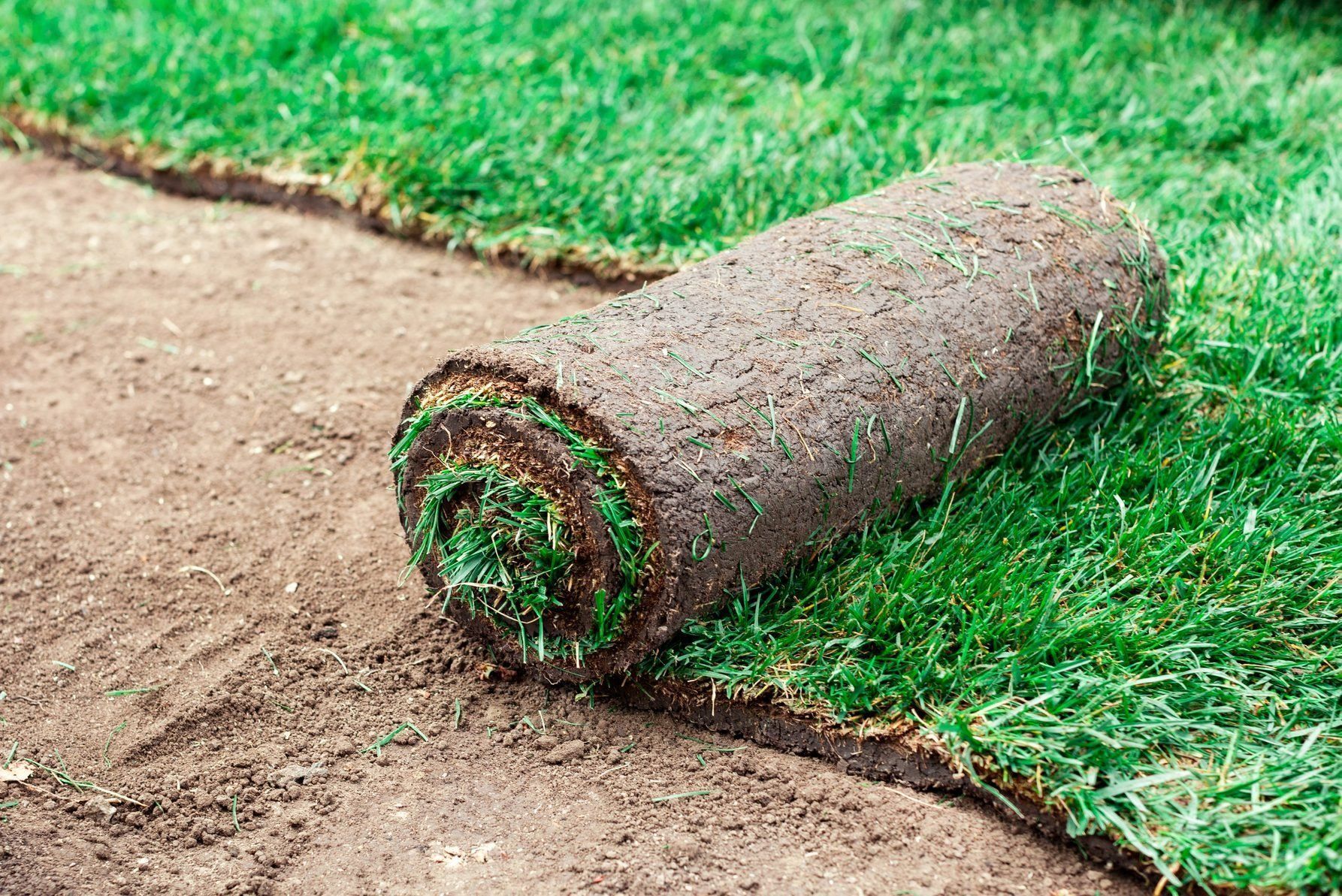
What is Sod?
Sod, also known as turf grass, is mature lawn that has been carefully cultivated and grown by professional farmers. It consists of grass and a part of the soil beneath it, held together by the root system or a biodegradable material. Sod is harvested in rolls or slabs and transported to various sites where instant green coverage is desired.
Why Choose Sod?
Immediate Transformation
Sod installation provides an instant aesthetic uplift to any property. It transitions a dusty, muddy lot into a verdant lawn within hours, a critical advantage for new homeowners or commercial properties seeking immediate curb appeal.
Superior Erosion Control
One of sod’s most significant advantages is its ability to prevent soil erosion from the get-go. This makes it an ideal choice for areas prone to erosion, such as slopes and hillsides. The robust root system of sod quickly anchors itself to the soil, providing stability and protection against water runoff.
Water Conservation
Sod requires less water compared to seeded grass once it's established. It is a mature ecosystem, with deep roots that tap into existing moisture reserves more efficiently. This feature makes sod a friendlier option for areas with water usage regulations or drought conditions.
Weed Resistance
The dense growth of sod discourages weed germination and growth, providing a uniform, weed-free lawn. This means fewer herbicides and maintenance, contributing to a healthier outdoor environment and less work for the homeowner
How to Install Sod
Preparing the Site
Proper ground preparation is key to sod success. The steps include:
- Clearing the Site: Remove all debris, stones, and weeds.
- Soil Testing and Improvement: Conduct a soil test to determine pH and nutrient levels. Amend the soil based on the test results to provide a fertile ground for the sod.
- Levelling and Grading: Smooth the soil to prevent water pooling and ensure firm contact with sod roots.
Installation Process
- Laying the Sod: Start at a straight line such as a driveway or sidewalk to ensure even rows. Lay the sod strips end to end, tightly against each other without stretching. Stagger the joints in a brick-like pattern for stability.
- Trimming: Use a sharp knife to cut the sod around obstacles such as trees, paths, or garden beds.
- Rolling the Sod: After laying, use a lawn roller to press the sod against the soil, eliminating air pockets and ensuring root contact.
Aftercare
- Initial Watering: Sod should be watered thoroughly immediately after installation, making sure moisture penetrates to the soil beneath. This initial heavy watering is crucial for root establishment.
- Mowing: Do not mow the sod until it is firmly rooted, which can take a few weeks. The first mow should be at a high mower setting to avoid stressing the grass.
- Ongoing Maintenance: Fertilize the sod about six weeks after installation and continue with regular feedings every 6-8 weeks during the growing season. Aerate the lawn annually to facilitate nutrient absorption and moisture penetration.
Sod vs. Seeding: A Comparison
While seeding might seem like a less expensive option, the additional care and time it requires can add up. Sod offers a nearly instant lawn with fewer inputs after installation. It's particularly suitable for:
- Immediate needs: Events, selling a home, or complying with local landscaping codes.
- Difficult terrain: Sloped areas where seed might wash away.
- Cool climates: Where growing a lawn from seed can be slower and less predictable.
Conclusion
Choosing sod for your lawn means investing in a quick, robust solution for a beautiful outdoor area. Whether for aesthetic appeal, erosion control, or a play area for kids and pets, sod provides a reliable, attractive green space. At Two Brothers Lawn and Snow, LLC, we pride ourselves on transforming spaces with high-quality lawn maintenance services.
For homeowners in Hamilton, Darby, Corvallis, Victor, and Stevensville, we are your go-to experts for creating and maintaining the perfect lawn. Reach out today to see how we can help turn your lawn aspirations into reality, ensuring your yard remains picturesque year-round.
Frequently Asked Questions
What is sod and how does it differ from seeding?
Sod is pre-grown grass that comes in rolls or slabs with established roots ready for immediate planting. It provides an instant lawn, unlike seeding, which involves sowing grass seeds directly into the soil and waiting for them to germinate and mature—a process that can take several weeks or months depending on the climate and soil conditions.
What is sod made of and what types are available?
Sod consists of mature grass and a thin layer of soil, held together by the root system or a biodegradable material. There are various types of sod available, including Kentucky Bluegrass, Bermuda Grass, Zoysia, and Fescue, each suited to different climates and soil types.
What is sod’s role in preventing erosion?
Sod plays a crucial role in erosion control. Its dense, mature root system binds the soil more effectively than seedlings, making it an excellent choice for areas prone to erosion, such as slopes or regions with heavy rainfall. This immediate ground cover prevents soil displacement and runoff.
What is sod’s lifespan and how long does it take to establish?
With proper care, sod can last as long as any naturally grown lawn. It typically takes about 2 to 3 weeks for sod to establish its roots in your yard, during which it should be watered regularly. Once established, it integrates into the local ecosystem and continues to grow and renew itself with routine maintenance.
What is sod’s advantage when it comes to water usage?
Sod requires less water than seeded lawns once established because its mature roots system efficiently absorbs moisture. This makes sod a more sustainable option in regions with water restrictions or where water conservation is a priority. Initially, though, sod needs ample watering to help roots establish in the new location.